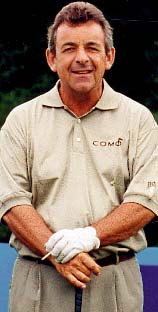History of Ryder Cup: Part 5
Scare for Nicklaus as Jacklin and Co. battle in Florida

Although 1969 proved to be the first time since 1957 that the Americans had not won the Ryder Cup outright, it did not mark a change in GB&I's overall fortunes.
 |
| Nicklaus - changes. |
All through the 1970s it was victory after crushing victory for the might of American golf. Never really threatened, they entered every Ryder Cup with the feeling of invincibility which Walter Hagen had warned against in 1929.
They could do nothing wrong and on occasion achieved wins without even fielding their strongest possible team.
Had it not been for Nicklaus writing a letter to Lord Derby, the then president of the British PGA, suggesting that selection for the GB&I team should be
extended to include the growing band of top-class European professionals, the Ryder Cup might have ceased to exist.
Nicklaus believed that "by the time of the 1977 contest at Lytham . . . it had become clear that the balance . . . was turning the match into a non-event."
Little could even Nicklaus have known how much this move would revitalise what had become an ailing if not moribund event.
However, the change did not yield immediate results. The 1981 match at Walton Heath saw another overwhelming American victory.
With perhaps the strongest team ever assembled, the United States achieved their biggest margin of victory on British soil. The team had three current major champions in Watson, Rogers and Nelson. It also fielded the names of Nicklaus, Trevino, Irwin, Floyd, Kite, Crenshaw, Pate and Miller.
Bruce Lietzke was the only American in that line-up who never won a major and in the face of such awesome opposition it seemed that the move to include Europeans had been thwarted by the ever increasing strength of Team USA.
 |
| Tony Jacklin - inspirational. |
The 1983 match at the PGA National course in Florida provided the watershed that had been hoped for in 1979. Although Europe did not win the Cup, there was a marked difference in their attitude.
This was largely inspired by two people - team captain Tony Jacklin and Seve Ballesteros who, after a stand-off with the European Tour in 1981, had become Jacklin's on-course lieutenant.
Ballesteros provided his team-mates with mounting inspiration particularly after playing what Nicklaus described as "the finest shot I have ever seen" - a 3-wood from a fairway bunker at the last to set up a birdie which earned him a singles half against Fuzzy Zoeller.
Jacklin then assured everyone that 1983 was no one-off.
"One thing is for certain, these matches are going to be as close as this from now on. There will be no more American walkovers," he said.
* Brought to you in association with Rolex
Next time: The Belfry bombshell

